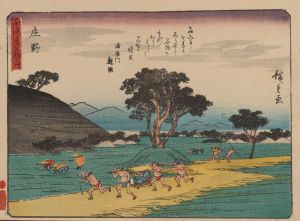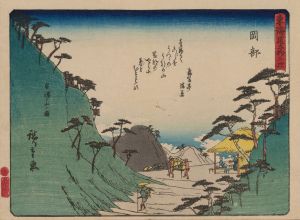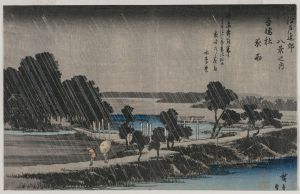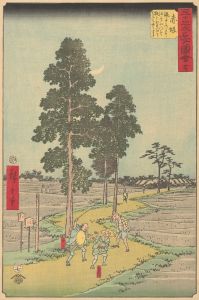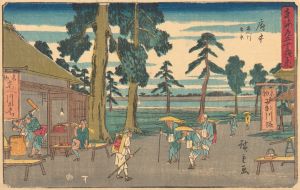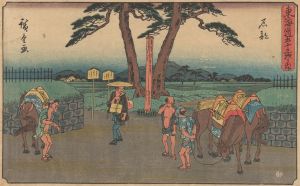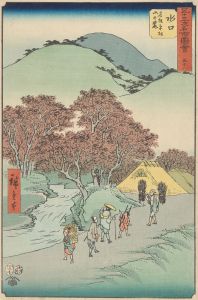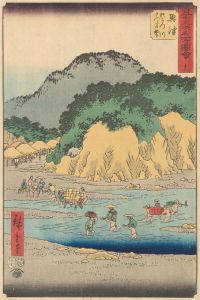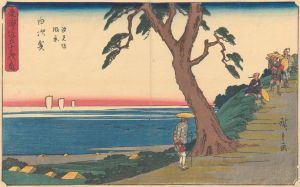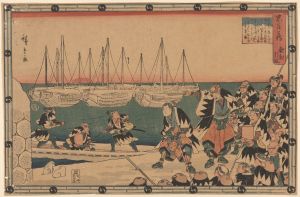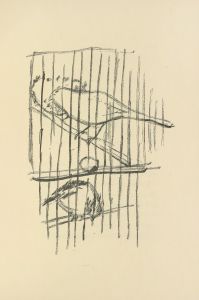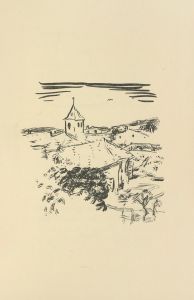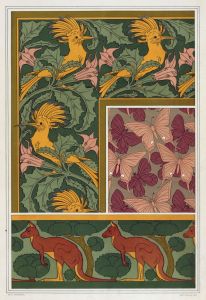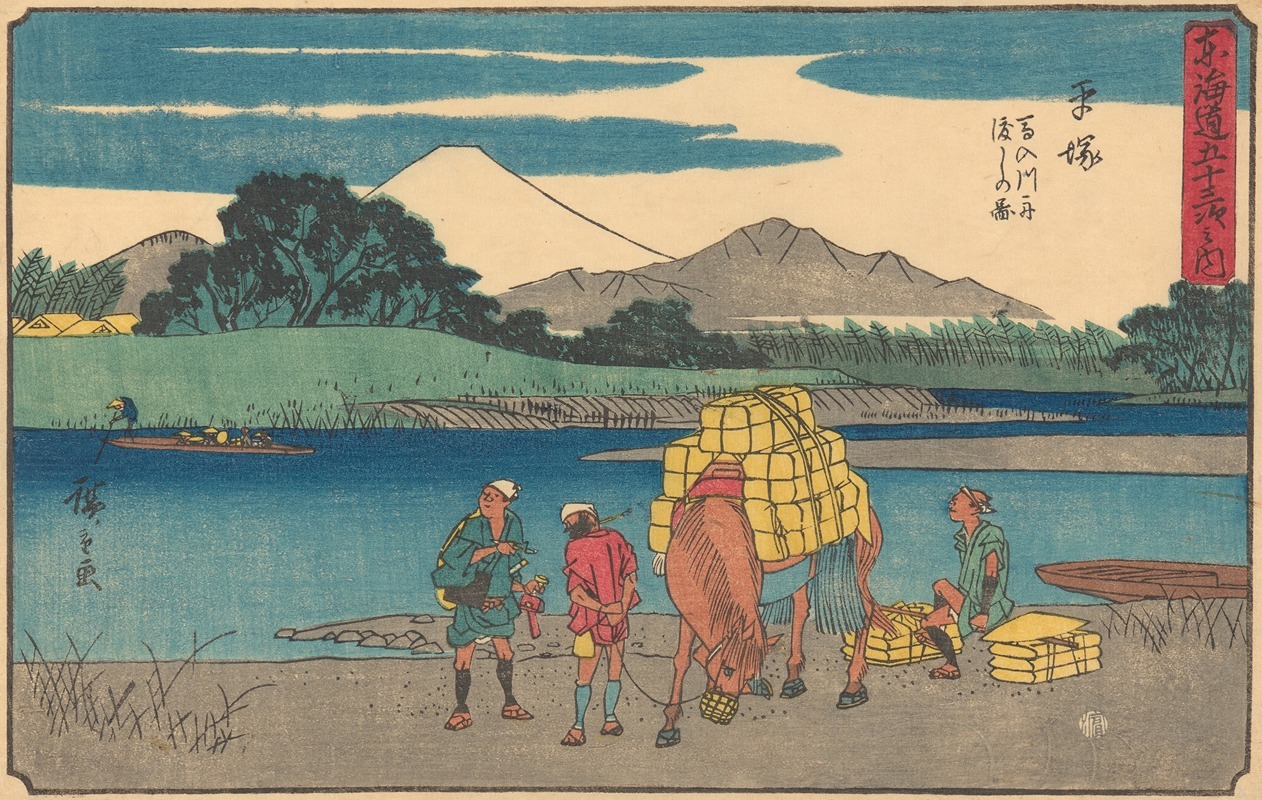
Hiratsuku
A hand-painted replica of Andō Hiroshige’s masterpiece Hiratsuku, meticulously crafted by professional artists to capture the true essence of the original. Each piece is created with museum-quality canvas and rare mineral pigments, carefully painted by experienced artists with delicate brushstrokes and rich, layered colors to perfectly recreate the texture of the original artwork. Unlike machine-printed reproductions, this hand-painted version brings the painting to life, infused with the artist’s emotions and skill in every stroke. Whether for personal collection or home decoration, it instantly elevates the artistic atmosphere of any space.
Andō Hiroshige, a renowned Japanese ukiyo-e artist of the Edo period, is celebrated for his landscape prints and series depicting various locations across Japan. One of his notable works is "Hiratsuku," part of the series "The Fifty-three Stations of the Tōkaidō" (Tōkaidō Gojūsan-tsugi), which was first published in the early 1830s. This series is among Hiroshige's most famous and influential works, capturing the scenic beauty and cultural significance of the Tōkaidō road, a vital route connecting Edo (modern-day Tokyo) to Kyoto.
The "Hiratsuku" print specifically depicts the Hiratsuka station, one of the fifty-three stations along the Tōkaidō. Each station served as a rest stop for travelers, offering lodging, food, and other services. Hiroshige's depiction of Hiratsuka captures the essence of travel during the Edo period, providing a glimpse into the daily life and landscape of the time.
Hiroshige's work is characterized by its use of vibrant colors, attention to detail, and ability to convey the atmosphere of the depicted scenes. In "Hiratsuku," as in many of his prints, Hiroshige employs a combination of perspective, composition, and color to create a sense of depth and movement. His use of perspective often draws the viewer's eye into the scene, inviting them to explore the landscape and the activities of the people within it.
The Tōkaidō series, including "Hiratsuku," was produced using the traditional ukiyo-e woodblock printing technique. This involved carving the image into a series of wooden blocks, one for each color, and then pressing them onto paper to create the final print. This method allowed for the production of multiple copies, making Hiroshige's work accessible to a wide audience.
Hiroshige's prints, including "Hiratsuku," played a significant role in popularizing the Tōkaidō road and its stations. They not only served as souvenirs for travelers but also as a means of virtual travel for those who could not make the journey themselves. The series was highly successful and contributed to Hiroshige's reputation as one of the leading ukiyo-e artists of his time.
The influence of Hiroshige's work extended beyond Japan, impacting Western art and artists, particularly during the Japonisme movement in the late 19th century. His innovative compositions and use of color inspired many Western artists, including Vincent van Gogh and Claude Monet, who admired the simplicity and elegance of Japanese prints.
Today, Hiroshige's "Hiratsuku" and the entire Tōkaidō series are celebrated for their artistic and historical significance. They offer valuable insights into the culture, geography, and social dynamics of Edo-period Japan. Hiroshige's ability to capture the beauty and essence of everyday life continues to resonate with audiences, making his work timeless and universally appreciated.





